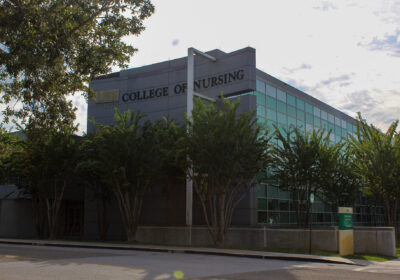EDITORIAL: Better time lines are needed for Title IX investigations

Currently, there’s no timeline for the Department of Education to complete Title IX investigations, which is unfair for all involved and causes a backlog of cases. SPECIAL TO THE ORACLE
The creation of Title IX in 1972 meant a revolution in education for women by taking strides toward ending discriminatory practices.
The title states: “No person in the United States shall, on the basis of sex, be excluded from participation in, be denied the benefits of, or be subjected to discrimination under any education program or activity receiving federal financial assistance.”
Essentially it bans discrimination based on sex at a school that receives federal funding. This extends to sports teams, financial aid, counseling, employment, admission and sex-based harassment.
Each university has a Title IX office dedicated to handling accusations of discrimination. When an individual involved feels as though their due process was violated during the university’s investigation, the issue can be taken up with the Office of Civil Rights (OCR) within the Department of Education. The university then has 30 days to turn over information regarding to case to the OCR.
The OCR, however, doesn’t have a time frame for conducting its own investigation. According to Title IX The Chronicle of Higher Education, cases last an average of 1.8 years.
There are 355 active sexual violence cases at 257 postsecondary institutions as of Oct. 25. One such investigation, at the University of Massachusetts-Amherst, was opened in June 2011. Another at Arizona State was filed in January 2016. Fifteen more were filed in 2013. All are currently open.
According to the Chronicle, there are 94 resolved Title IX cases.
When an investigation takes six years, those involved are left without a resolution. A program designed to trigger change in a sexually hostile environment doesn’t get the chance to do its job. Employees are left in situations where they don’t feel comfortable, students can be left in classes with those who harassed or assaulted them and nothing is done to change any issue that may be present.
Meanwhile, a Google search by prospective students or parents can reveal that a university is under investigation. Institutions such as Indiana University, Kansas State and Cornell Universities would show five open investigations potentially causing concern to these prospective students.
Universities are in limbo during an investigation, waiting for the case to be resolved. While they fulfilled their end of the investigation by providing the necessary documentation, the OCR can take extensive time completing the job.
Considering the sensitive information and issues these cases usually include, its understandable to allow for some time in order to do it right. Putting an exact time frame on it can prove to be a challenge, but it needs to be done in a timely manner in order to ensure the cases are ultimately reviewed.
As more cases stack up, there’s more work for the OCR. These issues are too important to just be a to-do list. There are real people and real issues under each case number, and they deserve to be treated as such.
There’s something broken in a system that’s only resolved 94 cases out of 449 since 2011, one of which was opened in 2008. That’s about 15 cases resolved a year, which isn’t satisfactory when 83 have been filed thus far in 2017 alone. The flaw in the system needs to be found for people to receive the due process they deserve.






